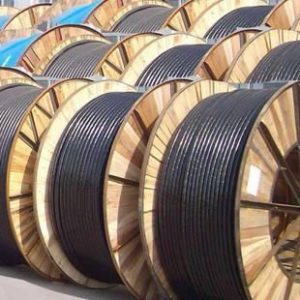
Much like overhead transmission lines, underground electrical cables and other auxiliary facilities can experience problems if they aren’t properly maintained. For instance, High Pressure Fluid and Gas Filled Pipe (HPFF and HPGF) cable types or Self-Contained Fluid Filled (SCFF) electrical cable types are prone to developing fluid leaks.
Buried power cable wires can also develop faults caused by bare neutrals, molded joints in splices, or even accidental excavation.
Underground lines may not be susceptible to damage caused by strong winds and falling tree branches, but trees (and other vegetation with deep root systems) toppling in a storm can uproot buried cables.
Although it’s possible to fix faults when they occur, repairs can be both challenging and time-consuming. In order to ensure the reliability and safety of power distribution systems, continued maintenance of underground cables is vital.
Locating Underground Cable Faults
Locating underground cable faults can be a challenge, but modern fault-locating technologies make this process more efficient. Two basic techniques include:
Time Domain Reflectometry (TDR)
These tests underground cables using low-energy signals that do not cause insulation damage, making it possible to locate a faulty section. TDR results are displayed as a graph, and properly functioning cables send back a return signal in a known timeframe (based on a set impedance setting).
High Voltage Radar Methods
There are three types of high voltage radar methods:
Arc Reflection – A filter, thumper and TDR device work together to provide the approximate distance to an electric cable fault.
Surge Pulse Reflection – A storage oscilloscope, thumper and current coupler are used to ionize distant or difficult-to-locate faults.
Voltage Pulse Reflection – This method uses a voltage coupler and analyzer equipped with a proof tester or dielectric test, to locate faults at voltages higher than 25kV.
Underground Cable Maintenance Procedures
Routine maintenance can help minimize the frequency of cable faults, and these procedures are classified as follows:
Preventive Maintenance – This aims to thwart possible faults that arise from outright negligence of the power distribution infrastructure. Maintenance activities that fall under this category are usually carried out annually, and they include;
• Checking the integrity and condition of ground connections, cable joints and splices, and correcting any issues.
• Inspecting the cleanliness and physical condition of switchgears, transformers, and other above-ground fixtures.
• Clearing dust, debris and other contaminant deposits from termination joint outer surfaces.
• Conducting contact resistance tests on terminations, insulation resistance tests between ground connections and conductors, to assess damage or wear.
• Testing for defective electrical contacts and joints with infrared thermal scanning. Joints that register temperature rise need to be cleaned and re-torqued before re-testing.
Corrective Maintenance – This is conducted in response to faults (e.g. possible damage caused by digging, internal failures such as defective cables, overloading, poor handling and installation, etc.), to determine the appropriate remedial action. Corrective Maintenance steps include;
• Checking electric cable routes for possible damage after excavation or road work.
• Insulation resistance testing to detect faults between conductors and ground connections.
• Pinpointing faulty areas using a sheath tester and cable fault locator.
• Repairing, re-testing and recommissioning faulty electrical cables.
• Reducing the risk of recurrence with root cause analysis and remedial solutions.
Condition-Based Maintenance – These check underground power transmission cables and above-ground grid fixtures (like joints and terminations) that have already experienced partial damage. It helps to predict when and what kind of repairs might be needed in the future, or if faulty sections need immediate replacement.
Setting Up Underground Cable Systems
The process of undergrounding may involve disruptive activities like digging up sidewalks and paved roads, clearing trees and vegetation with deep roots, rerouting water, gas and telecom lines, etc.
The success of a project largely depends on proper planning and management, especially to minimize the disturbance to public utility services. Other key factors include adequate funding, quality control, timely resolution of problems, and effective communication with all stakeholders, public agencies and the affected community.


